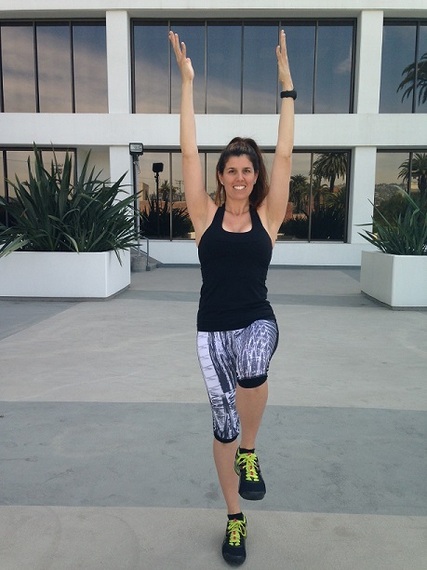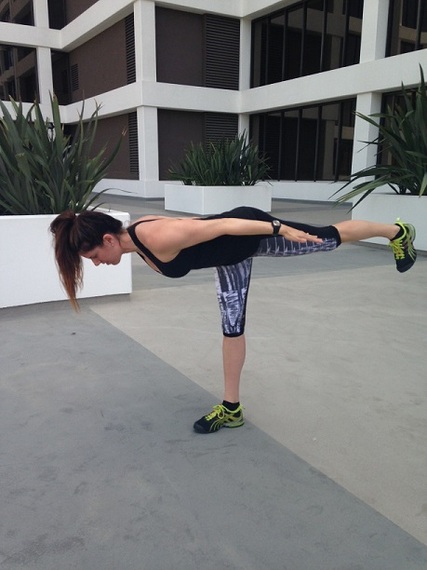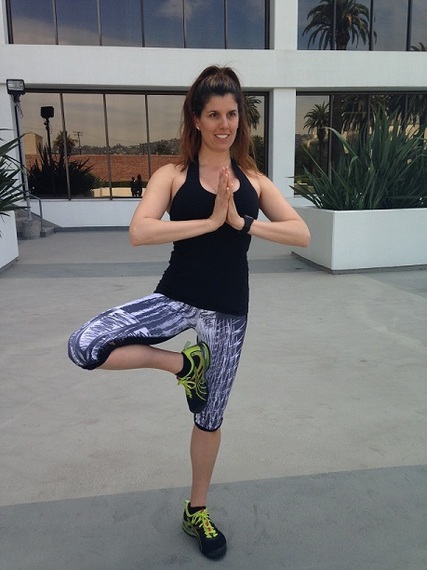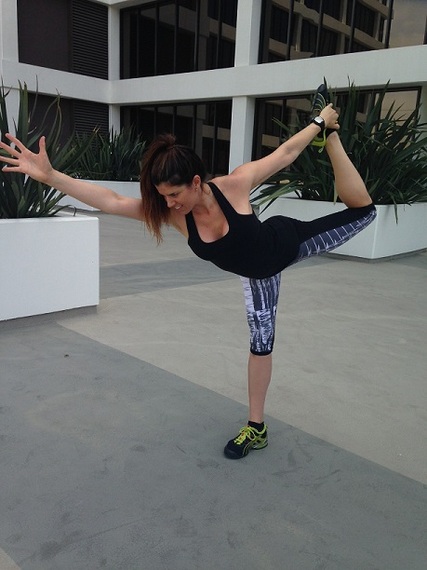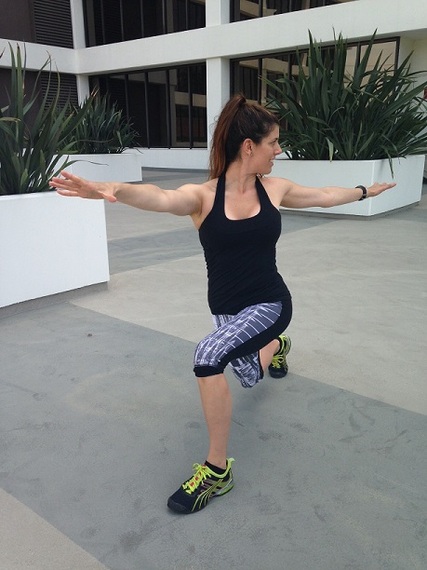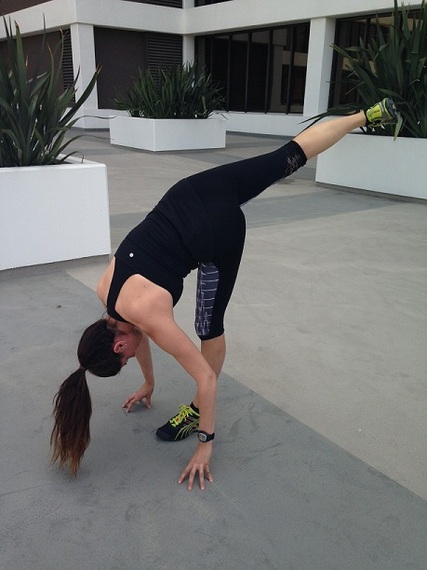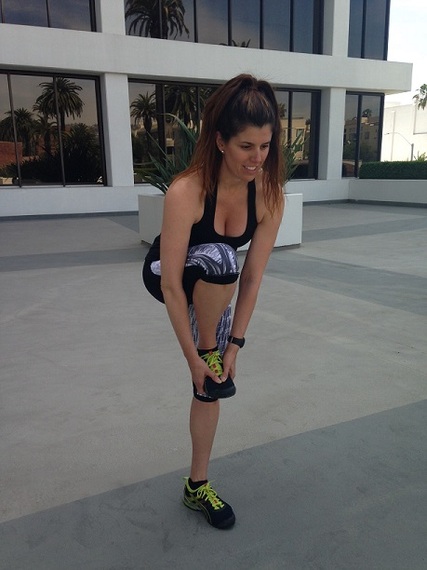If you stand on a single leg and then close your eyes, most likely you will hop around and eventually place your foot on the ground to avoid falling. If you switch to the other side and repeat this activity, most likely it will be worse off than the first side or it will be better. Try it.
This activity is one way of measuring proprioception, or your brain's ability to know where your limbs are spatially. As a general rule, we use our eyes to control our balance in life. However, there are also mechanisms in the ear that indicate balance, along with receptors throughout the body that help the brain gauge where the body is in space. It is suggested that people exercise using proprioceptive-enriched environments so that injury risk is decreased as we age. (1, 2)
Some equipment that can challenge proprioception is listed here. Otherwise, if you wish to challenge your balance with the simplicity of your own body weight and the ground, do the program below, all of which are performed in yoga classes:
What you need:
• A second hand clock
• A focal point that will help you with balance (in yoga this is called your Drishti).
• Perform each balance activity for one minute while keeping your focus centered
Single Leg Tadasana:
Stand on your right leg, lifting your left foot off the ground. Find your new center of gravity balancing on the one leg, pulling your navel in toward your spine and tucking your tailbone slightly toward the earth. Depress your shoulder blades down your back while lifting the chest up slightly. Bring your arms to parallel above your head with your palms facing inward. Squeeze the muscles in the right glute and make sure your right toes are spread wide for a larger foundation. Switch sides.
Single Leg Tadasana with Eyes Closed:
Same exercise as above, but this time have your hands either in prayer or out to the side for balance. You will see that the difficulty of this exercise increased significantly from the first. Switch sides.
Airplane Pose:
Starting on your right foot, engage your stomach muscles while lifting your left leg back behind you into hip extension. Tilt your left hip toward the earth as you point your left toes toward the ground. Lean your trunk (your torso) forward so that your body is in a "T" shape, with your balance remaining on your right leg. Bring your arms back to remain actively parallel at your side with your thumbs facing toward the sky. Find your drishti and hold. Switch sides.
Tree Pose:
Standing on your left leg, lift your right foot and place the entire sole of your foot on either the inside of your left thigh or on the left calf. Never balance your foot on your knee joint. Once you connect the foot to the opposite leg, focus on lifting your being upward while pulling your navel in toward your spine and tucking your tailbone downward slightly. Externally rotate (Turn out) the right knee toward behind you. You may either place your hands at prayer or bring your arms overhead to where your palms are facing inward, your arms are straight and your shoulders are depressed away from your ears. Switch sides.
Standing Bow Pose:
Same as Airplane pose, except you should kick your back foot into the hand on the same side before shifting your weight into the "T" shape with your body. Once you feel the strong grip on your foot, then kick back and upward. Reach the opposite arm forward as you create a slight lift in the chest. Be sure to engage your core muscles to avoid overextending your back, and to also help with balance. Switch sides.
Lunge with Trunk Rotation:
Start in a staggered stance with one foot forward, one foot back. Supposing you begin with your right leg forward, make sure your right knee tracks directly in line with your right ankle at a ninety degree angle. Your back leg should be bent at 90 degrees as well. Take your arms out to a "t" shape and while maintaining neutral spine, rotate your arm right and follow your right hand as you bring your arms parallel to your legs. Be sure to keep your hips facing forward and your knees straight, not tilted outward/inward. Perform 10 reps, then switch sides.
Standing Splits:
Standing one leg, reach your hands to the opposite side of the standing foot dropping your chest forward toward your balancing leg. Reach the opposite leg skyward, while descending deeper into the stretch. If you cannot reach the ground, you can use a yoga block, bringing the ground up toward you. If you are more advanced, you can grip onto the back of your calf pulling your chest and forehead closer to your standing leg. Switch sides.
Hand to Foot Pose:
Standing on your right leg, take your left foot into your hand and grip the bottom of the foot. You can hold it here, or you can extend your left leg out in front of you. If you extend your leg out, be sure to lean your weight back slightly into the right leg as you kick the left foot into your hand. Be sure to also keep your standing leg straight. If you can, bring your forehead toward the left leg and slightly flare your elbows out to the side, engaging your back muscles and releasing any shoulder tension/elevation. Switch legs.
References:
(1) Mandelbaum, et al (2005) Effectiveness of a Neuromuscular and Proprioceptive Training Program in Preventing Anterior Cruciate Ligament Injuries in Female Athletes. The American Journal of Sports Medicine, 33:7; 1003-1010. http://ajs.sagepub.com/content/33/7/1003.short
(2) Malliou et al (2005).Proprioceptive training (balance exercises) reduces lower extremity injuries in young soccer players.Journal of Back and Musculoskeletal Rehabilitation, 17:3-4;101-104. http://iospress.metapress.com/content/xk12mp9dwfeh4pvn/
Photo Credits: Ellie Panger
